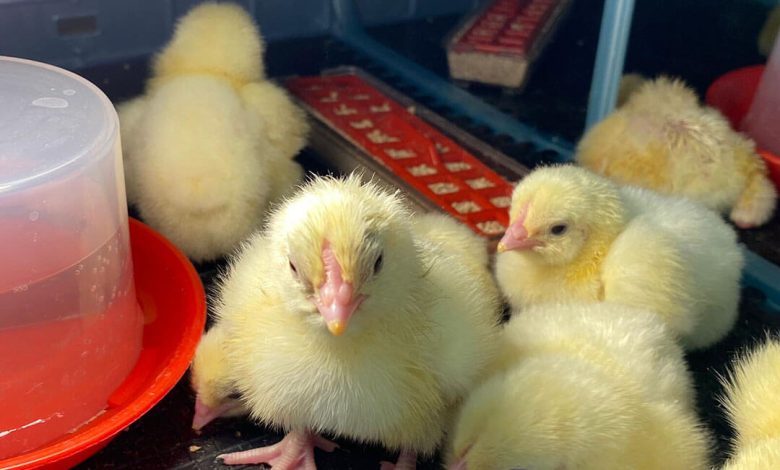Essentials Oils play pivotal role to protect from Respiratory Illnesses in chickens

Essentials Oils play pivotal role to protect from Respiratory Illnesses in chickens
Dr Onkar Pawaskar and Dr Mangesh sagar
Essential oils are active ingredients that are derived from extracts of plant parts such as seeds, leaves, flowers, roots, bark, wood, fruits etc. They are well known for their positive effects on bird health because of antibacterial, antifungal, natural preservative and additive action. Essential oils are produced by secondary metabolism of plants and its bioactivity depends on their complex composition of the volatile molecules. Among the various indications for their use, the application during respiratory challenges in poultry has been effectively proven. In combination with conventional treatments or as a preventive, they can help to alleviate symptoms and facilitate breathing. At the same time, they have demonstrated their antimicrobial activities in several in-vitro studies.
Essential oils contain various compounds like terpenes, terpenoids, phenylpropanes and phenols which impart the unique aromatic and bioactive properties in a range of plants. Terpenoids are one of the primary components of essential oil and synthesised from plant glandular tissues, particularly glandular trichomes. The two main precursors of terpenoids, isopentenyl diphosphate (IPP) and its isomer dimethylallyl diphosphate (DMAPP) are formed by two independent reactions in a plant cell.
Essential oils are water soluble plant extracts that are often made up of different components. Some most commonly used essential oils in poultry industry are eucalyptus oil, thyme oil, camphor oil, mint oil, lavender oil. These substances are associated with different positive effects, like an antimicrobial activity or a positive influence on respiration. Sometimes, it is just one of the chemical components of an essential oil which is responsible for its efficacy, therefore it is extracted and concentrated. Only the natural essential oils and their extracts show the desired high activity, their synthetic counterparts remain largely ineffective.
Essential oils can act as a natural antioxidant which provides health benefits against oxidative stress in animals. Antioxidant activity of essential oils may be related to their ability to scavenge reactive oxygen molecules. Phenolic compounds are found to be more potent as anti-oxidant than vitamins E, C and carotenoids. Essential oils derived from rosemary (Rosmarinus Officinalis), lavender (Lavandula spp.), eucalyptus (Eucalyptus oblique), clove (Syzygium aromaticum), chamomile (Anthemis nobilis), ginger (Zingiber officinale), peppermint (Mentha piperita) and thyme (Thymus vulgaris) are found to be effective against oxidative damage.
The anti-inflammatory effects of essential oils were explained in number of studies. Essential oils are rich in the phenolic compound which has strong anti-inflammatory action. Extracts of curcuma, red pepper, black pepper, cumin, cloves, cinnamon, mint and ginger showed to have significant anti-inflammatory effects. Anti-inflammatory effect of essential oils can be attributable to its ability to scavenge reactive oxygen species which decreases the oxidative damage in tissue and thereby reduces inflammation. Terpenoids and flavonoids are major substances of essential oils that possess anti-inflammatory activities. They suppress the metabolism of inflammatory prostaglandins. Flavonol glycosides and flavonoid aglycons exert anti-inflammatory activity in the animal by modulating arachidonic acid metabolism through inhibition of cyclo-oxygenase and lipooxygenase activity.
Using essential oils as alternative or supportive treatment to conventional methods is gaining importance. This is reflected in the increased research about the efficacy of essential oils or their components. Many farmers have already experienced the alleviating effects of essential oils. In recent years, the beneficial use of essential oils in commercial poultry farming has been examined more closely.
Respiratory diseases in poultry often result in a reduced feed efficiency and can ultimately lead to a reduced production performance and higher mortality rates.
Natural peppermint and eucalyptus oils are commonly used to alleviate respiratory symptoms. They have the ability to thin mucus and thus facilitate its removal from the airways. In combination with their antispasmodic and expectorant properties, the airways are cleared and breathing becomes easier during infection. One of the components of eucalyptus oil, 1,8-cineol, has also shown anti-inflammatory and immune-stimulating effects and reduced panting rates in trials. These effects are also beneficial to the animals during hot and dry summer periods, when increased dust pose an additional burden for the airways and the panting rates increase with rising temperatures.
In addition to the various effects on the respiratory systems, many essential oils have also demonstrated antimicrobial properties. Several in vitro studies have shown good inhibitory effects against bacteria, viruses, and fungi. Many studies have confirmed the antimicrobial effects of highly concentrated essential oils that they are able to permeate cell membranes and disturb the energy metabolism of the bacterial cell.
In fighting respiratory symptoms, products containing essential oils need to be used. Not only does it alleviate respiratory symptoms, but the antimicrobial effects may also have a positive influence on decreasing pathogen pressure. Especially in virus-related respiratory diseases and when the immune system is challenged during stress situations, damaged mucous membranes are susceptible to bacterial superinfections.
In conclusion essential oils and their compounds are efficient as antimicrobial, antioxidant, immuno-stimulating and anti-inflammatory agents. These compounds are considered as safe feed additive and also for water use in poultry. Essential oils and their compounds can be used as natural non-antibiotic growth promoters in chickens where problems of resistance are inevitable.
For more details please contact
Volschendorf: Website: www.volschendorf.com




